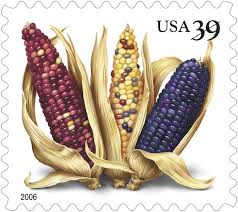Neonicotinoid insecticides are used as seed treatments on most grain and oilseed crops in the U.S., yet the extent and likelihood of spread of insecticide residues during planting has not previously been quantified. Honeybees are the best model for estimating exposures in mobile insects. We measured neonicotinoid dust drift during maize sowing and used sites of maize fields, apiary locations, and honeybee foraging radii to estimate likelihood of forager exposure. We performed a concurrent multiyear field assessment of the pest-management benefits of neonicotinoid-treated maize. Our results indicate that over 94% of honeybee foragers throughout the state of Indiana are at risk of exposure to varying levels of neonicotinoid insecticides, including lethal levels, during sowing of maize. We documented no benefit of the insecticidal seed treatments in terms of crop yield during the study. We demonstrate that the likelihood of exposure for nontarget lands and the primary agricultural pollinator species, Apis mellifera, is high during sowing of neonicotinoid-treated maize seed in a representative agricultural state in the U.S. This pest-management approach has potential to contaminate nontarget lands and waterways; we estimate that over 42% of the state of Indiana will encounter deposition of neonicotinoid residues during the period of maize sowing. However, we also demonstrate that the risks to pollinators and other sensitive organisms can likely rapidly and dramatically reduced without yield penalties, by aligning use rates of neonicotinoid insecticides with pest incidence.
Source: Succcessful Farming, May 24, 2017
http://www.agriculture.com/news/crops/purdue-study-corn-seed-treatment-…
Study reference:
Planting of neonicotinoid-treated maize poses risks for nontarget organisms over a wide area without consistent crop yield benefit C. H. Krupke1, J. D. Holland1, E. Y. Long2, and B. D. Eitzer3 1. Department of Entomology, Purdue University. 2. Department of Entomology, The Ohio State University. 3. Connecticut Agricultural Experiment Station

- Login om te reageren
